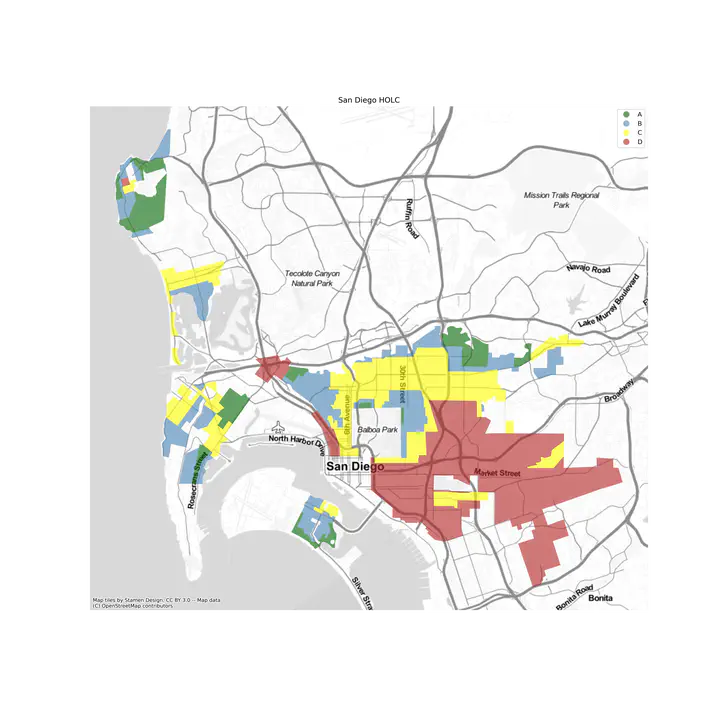
Abstract
This paper investigates the long-term impacts of the federal Home Owners’ Loan Corporation (HOLC) mortgage risk assessment maps on the spatial dynamics of recent income and racial distributions in California metropolitan areas over the 19902010 period. We combine historical HOLC boundaries with modern Census tract data and apply recently developed methods of spatial distribution dynamics to examine if legacy impacts are reflected in recent urban dynamics. Cities with HOLC assessments are found to have higher levels of isolation segregation than the non-HOLC group, but no difference in unevenness segregation between the two groups of cities are found. We find no difference in income or racial and ethnic distributional dynamics between the two groups of cities over the period. At the intra-urban scale, we find that the intersectionality of residing in a C or D graded tract that is also a low-income tract falls predominately upon the minority populations in these eight HOLC cities. Our findings indicate that neighborhoods with poor housing markets and high minority concentrations rarely experience a dramatic change in either their racial and ethnic or socioeconomic compositions— and that negative externalities (e.g. lower home prices and greater segregation levels) emanate from these neighborhoods, with inertia spilling over into nearby zones.